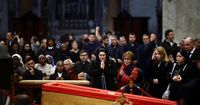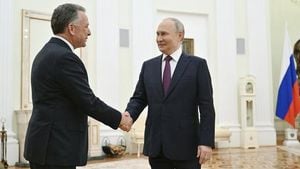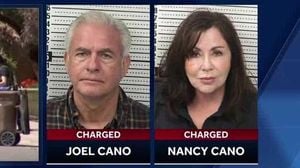Tens of thousands of people have lined up in Vatican City to catch a final glimpse of Pope Francis as he lay in state for a second day, with Italian authorities stepping up security arrangements before his weekend funeral. Francis died aged 88 on Monday morning in his rooms at the Vatican’s Santa Marta guesthouse, having only recently left hospital after five weeks of being treated for double pneumonia.
According to Vatican officials, about 61,000 people had filed past the late Catholic leader’s red-lined wooden coffin in the first 26 hours since he began lying in state at St Peter’s Basilica on Wednesday morning. Such was the demand to see him that authorities extended visiting hours on Wednesday from midnight (22:00 GMT) until 5:30 a.m. (03:30 GMT) on Thursday. After a brief break of just one and a half hours, the doors opened again, with authorities indicating that the window might be extended again on Thursday night if necessary.
Each mourner was ushered past the casket within seconds, while authorities on Thursday banned the use of smartphones inside the basilica. A day earlier, the flow of mourners was slower as many people attempted to take photos and videos. “It was a brief but intense moment next to his body,” Italian Massimo Palo, 63, told the AFP news agency after his visit. “He was a pope amongst his flock, amongst his people, and I hope the next papacies will be a bit like his,” he added. “He was a wonderful pope,” Rome resident Alessandra Caccamo told Reuters as she queued outside the Vatican. “I’m going to miss him so much because it’s like I’ve lost a piece of me.”
The head of the pontiff’s medical team, Dr. Sergio Alfieri, shared insights into Francis's final moments, stating that he had died quickly from an unexpected stroke and did not suffer undue pain. “I entered his rooms and he had his eyes open,” Alfieri told the Corriere della Sera newspaper. “I ascertained that there were no respiratory problems, and then I tried to call his name, but he did not respond to me. In that moment, I knew there was nothing more to do.”
Funeral preparations are underway, with the coffin scheduled to be sealed on Friday at 8 p.m. (18:00 GMT) in a ceremony presided over by Cardinal Kevin Farrell, the camerlengo who is running the Vatican’s day-to-day affairs until a new pope is elected. More than 170 delegations—including heads of state and government, and other dignitaries such as United States President Donald Trump, Argentinian President Javier Milei, and Britain’s Prince William—are expected in St. Peter’s Square for Saturday’s funeral. Millions more people will watch on television across the globe.
Italy’s Civil Protection Department estimated that “several hundred thousand” people will descend on Rome over the weekend, coinciding with a public holiday. After the funeral, Francis’s coffin will be taken to his favourite church, Rome’s papal basilica of Santa Maria Maggiore. A group of “poor and needy” will be present at the basilica to welcome the coffin, the Vatican announced. He will be interred in the ground, with his simple tomb marked with just one word: Franciscus. People will be able to visit it starting Sunday morning, April 27, 2025.
Following the funeral, attention will shift to the process of selecting Francis’s successor. “A chapter in the church’s history has been closed,” Cardinal Gerhard Ludwig Mueller told the Italian daily La Repubblica in an interview. Mueller is one of the 135 cardinals eligible to vote in the secret conclave, which is not expected to begin until at least May 6. Before the conclave, cardinals already in Rome are meeting each day to discuss logistical matters for the day-to-day running of the 1.4 billion-member church.
Thursday’s meeting lasted about three hours, with 113 cardinals participating. The next meeting is expected on Friday morning, but the cardinals will not meet on the day of the funeral. Each cardinal taking part in the meetings must take an oath to “scrupulously maintain” secrecy over any discussions about the election of the next pope.
As the world mourns the loss of a leader who championed the marginalized and sought to reform a divided institution, many are left reflecting on the legacy of Pope Francis. His reign, marked by efforts to bridge gaps within the church and address pressing social issues, will be remembered by many as a significant period in the Catholic Church's history.




